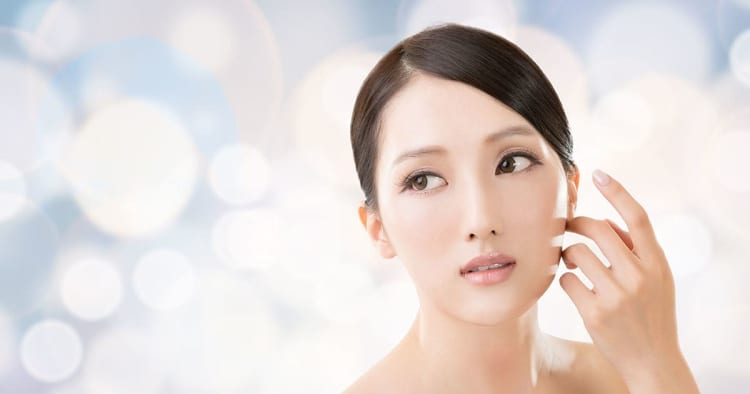Hi!
Sorry to hear that you are still suffering from obvious red scars during the increased number of breakouts on your cheeks.
This must be quite distressing for you. These red marks are known as Post Inflammatory Erythema (PIE).
PIE presents as localized skin redness following any type of skin inflammation and may progress to scarring. Facial PIE improves with time, but very slowly, and in some cases, complete clearance of PIE cannot be achieved.
PIE should be understood as a scar with erythematous components and not as a simple erythematous or vascular lesion.
You might be able to spot that some of the PIE that have faded may, in fact, have progressed to slightly depressed scars.
How do you get rid of red acne scars due to active outbreaks?
The mainstay of treatment for Post Inflammatory Erythema remains energy-based devices such as:
- Long-pulsed light or laser therapy such as Intense Pulsed Light (IPL) with vascular filters, or vascular lasers such as Yellow Laser, Pulsed Dye Laser, Quasi / Long Pulsed Nd:YAG Laser, 940nm Diode Laser, long pulsed KTP Laser - these work by targeting the haemoglobin inside skin blood vessels. The laser energy is absorbed and converted into heat causing the vessels to shrink and close up, improving the redness.
- Fractional Resurfacing treatments such as Fractional Radiofrequency, Fractional Lasers, Fractional Microneedling Radiofrequency. These target water and can produce photothermal damage to deeper dermal vasculature as well as potential anti-inflammatory and anti-angiogenetic properties.

I own and use both Long Pulsed and Fractional devices. Personally, I prefer to use Fractional Resurfacing treatments as they improve concomitant scarring or active acne often present in patients with PIE.
Long-Pulsed Lasers do however have advantages in having less downtime.
Acne-induced PIEs are generally resistant to available topical medication. There is no evidence supporting the effectiveness of topical treatments for Post Inflammatory Erythema. The following topical off-label treatments could possibly help:
- Silicone gel - This has been shown to improve erythema in keloids and hypertrophic scars and may help with PIE as well. It increases hydration of stratum corneum facilitating regulation of fibroblast production and reduction in collagen production. Silicone also modulates the expression of growth factors, fibroblast growth factor β (FGF β) and tumor growth factor β (TGF β)
- Topical vasoconstrictors such as Brimonidine or Oxymetazoline - These are used mainly in rosacea and have great albeit temporary effect on redness. Thus, they are probably only suitable for sporadic usage such as during important events
Needless to say, it is important to control active acne and reduce sun exposure to prevent further skin damage and development of marks.
Do speak to your doctor to find out how best to manage your red acne scars and active acne.
Hope this helps!
Warmest regards,
Dr Wan Chee Kwang
References:
Minu L. Mathew et al. Intense Pulsed Light Therapy for Acne-induced Post-inflammatory Erythema. Indian Dermatol Online J. 2018 May-Jun; 9(3): 159–164.
Neerja Puri et al. The Efficacy of Silicone Gel for the Treatment of Hypertrophic Scars and Keloids. J Cutan Aesthet Surg. 2009 Jul-Dec; 2(2): 104–106.
Chernoff WG et al. The efficacy of topical silicone gel elastomers in the treatment of hypertrophic scars, keloid scars, and post-laser exfoliation erythema. Aesthetic Plast Surg. 2007 Sep-Oct;31(5):495-500.
Andrew William Johnson et al. The Role of Topical Brimonidine Tartrate Gel as a Novel Therapeutic Option for Persistent Facial Erythema Associated with Rosacea. Dermatol Ther (Heidelb). 2015 Sep; 5(3): 171–181.
Yoon-Soo Cindy Bae-Harboe et al. Easy as PIE (Postinflammatory Erythema). J Clin Aesthet Dermatol. 2013 Sep; 6(9): 46–47.
Park KY et al. Comparison of fractional, nonablative, 1550-nm laser and 595-nm pulsed dye laser for the treatment of facial erythema resulting from acne: a split-face, evaluator-blinded, randomized pilot study. J Cosmet Laser Ther. 2014 Jun;16(3):120-3.
Glaich, A. S. et al. Fractional Photothermolysis for the Treatment of Postinflammatory Erythema Resulting from Acne Vulgaris. Dermatologic Surgery, 33(7), 842–846.
Min S et al. Fractional Microneedling Radiofrequency Treatment for Acne-related Post-inflammatory Erythema. Acta Derm Venereol. 2016 Jan;96(1):87-91.





